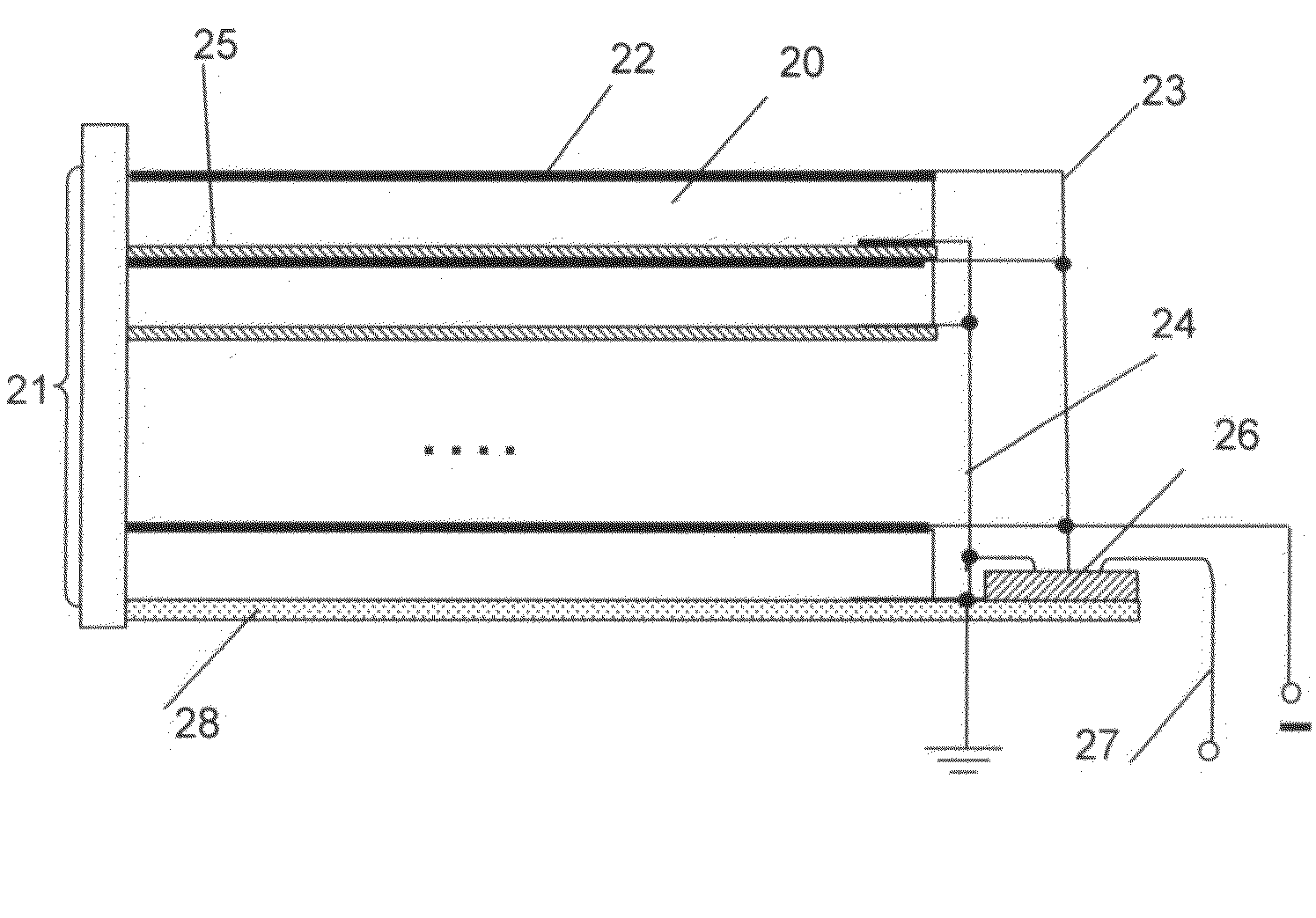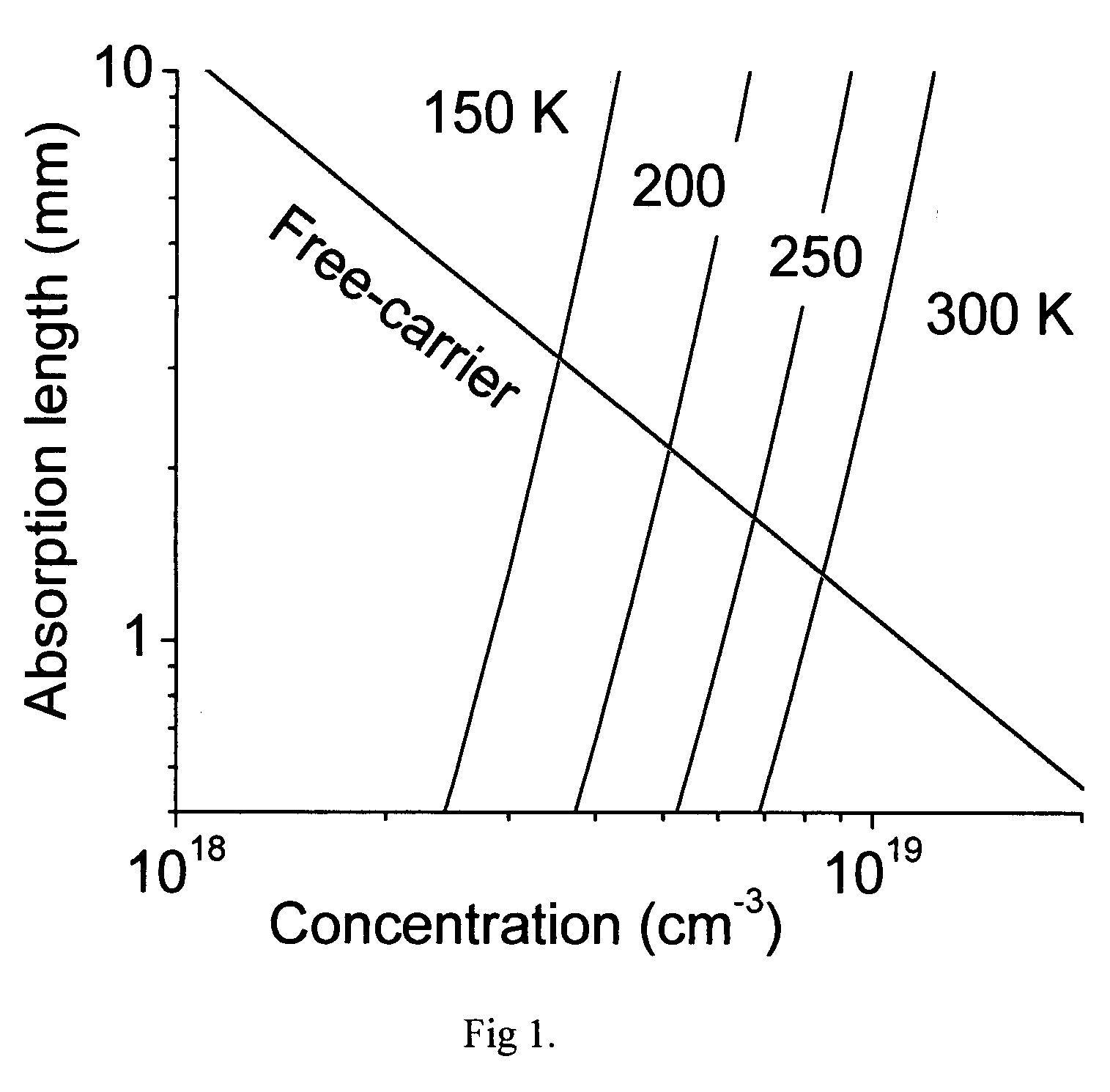High-energy radiation scintillation detector comprising multiple semiconductor slabs
- Summary
- Abstract
- Description
- Claims
- Application Information
AI Technical Summary
Benefits of technology
Problems solved by technology
Method used
Image
Examples
Embodiment Construction
[0027]FIG. 1 shows the dependence of the absorption length λ on the electron concentration and temperature in n-type doped InP at the optical wavelength of 0.92 μm, typical for the InP interband emission spectrum. Both the interband and the free-carrier contributions to absorption are shown. The interband curves are labeled with the values of temperature T in degrees K. The free-carrier curve is approximately independent of temperature. Similar graphs, constructed for other than InP compound-semiconductor materials, like GaAs or CdTe, will serve to determine the maximum thickness L of semiconductor slabs according to the invention. In the preferred embodiment, one must have L<λ.
[0028]FIG. 2 schematically illustrates one of the embodiments of the non-pixellated radiation detector, according to the present invention. In FIG. 2a, a cross-sectional view of the device structure is presented. Multiple semiconductor slabs 20, are integrated into one block 21. The slabs 20 are isolated from...
PUM
 Login to View More
Login to View More Abstract
Description
Claims
Application Information
 Login to View More
Login to View More - R&D
- Intellectual Property
- Life Sciences
- Materials
- Tech Scout
- Unparalleled Data Quality
- Higher Quality Content
- 60% Fewer Hallucinations
Browse by: Latest US Patents, China's latest patents, Technical Efficacy Thesaurus, Application Domain, Technology Topic, Popular Technical Reports.
© 2025 PatSnap. All rights reserved.Legal|Privacy policy|Modern Slavery Act Transparency Statement|Sitemap|About US| Contact US: help@patsnap.com



